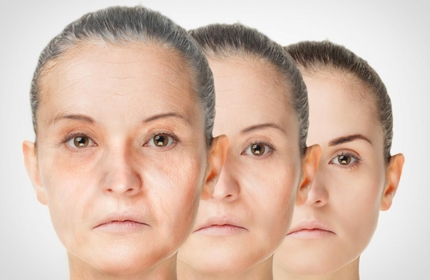 Novocaine is a hydrochloride of diethylaminoethyl ether of para-aminobenzoic acid, a moderately active anesthetic. The more accurate name of the substance is procaine; novocaine is its trade name, but the substance is better known as novocaine.
Novocaine/procaine has shown anti-aging effects in a number of studies. The greatest effect was achieved by intramuscular and intravenous use of procaine, a weaker effect was achieved with oral administration.
Important:
Anesthetics cause allergic reactions in a large number of people and may even lead to death. So everything described in this article you use at your own risk.
Novocaine is a hydrochloride of diethylaminoethyl ether of para-aminobenzoic acid, a moderately active anesthetic. The more accurate name of the substance is procaine; novocaine is its trade name, but the substance is better known as novocaine.
Novocaine/procaine has shown anti-aging effects in a number of studies. The greatest effect was achieved by intramuscular and intravenous use of procaine, a weaker effect was achieved with oral administration.
Important:
Anesthetics cause allergic reactions in a large number of people and may even lead to death. So everything described in this article you use at your own risk.
Anti-aging research on procaine
Procaine was researched to treat severe arthritis and to prolong life in the 1940s by the Romanian physician Ana Aslan. It was observed that procaine, along with its analgesic effects, led to improved memory, less depression, more energy, restoration of normal hair color, improved skin color, and overall wellness in patients.[1]
The revitalizing and anti-aging effects were so strong that the decision was made to release a special drug, Gerovital H3, and then its improved version, Aslavital.
Once in the body, procaine is quickly broken down by plasma and liver enzymes to para-aminobenzoic acid (PABA) and diethylaminoethanol (DEAE). Both of these substances are present in the body in their natural form and have a number of beneficial properties. At this point, it is still not known whether the health-promoting effects of procaine are due to these two substances or to procaine itself. It is believed that, at least in the procaine form, these substances penetrate the cell better.[2]
Para-aminobenzoic acid
Para-aminobenzoic acid (PABA, PABA, vitamin B10 or paravitamin B). An organic compound, an amino acid, a derivative of benzoic acid, widely distributed in nature. It is a cofactor of vitamin B9 (Participates in the synthesis of this vitamin), is lactogenic, protects the skin from ultraviolet radiation, and promotes tanning.
In experiments, PABC had the ability to restore normal hair color, although it did not always do so (10-25% of the time). It is also an antioxidant, removes pigmented spots on the skin and generally improves the condition of the skin. It prevents arthritis and increases joint flexibility.
Diethylaminoethanol
Diethylaminoethanol (DEAE) is a substance similar to DMAE and has similar properties. Dimethylaminoethanol (DMAE) is a natural nutrient found in foods such as anchovies or sardines. DMAE stimulates the production of choline, which in turn helps the brain optimize acetylcholine production. Acetylcholine is the main neurotransmitter involved in learning and memorizing.
DMAE produces a mild stimulatory effect on the brain that develops slowly over several weeks and does not produce a withdrawal effect (close analogues are GABA, glycine). DMAE is useful for treating chronic fatigue syndrome, depression, and improves sleep. DMAE removes senile pigmented spots on the skin associated with the accumulation of lipofuscin in the tissues.
It can thus be seen that these two substances produce aging related effects similar to procaine.
Applications
Novocaine is used in medicine to dilute various drugs injected intramuscularly to make the injection less painful.[3] However, this method of use can be dangerous because of possible allergic reactions to novocaine.
Novocaine can also be taken orally. Finally, supplements in the form of PABA and DMAE can be taken, this option is the safest.